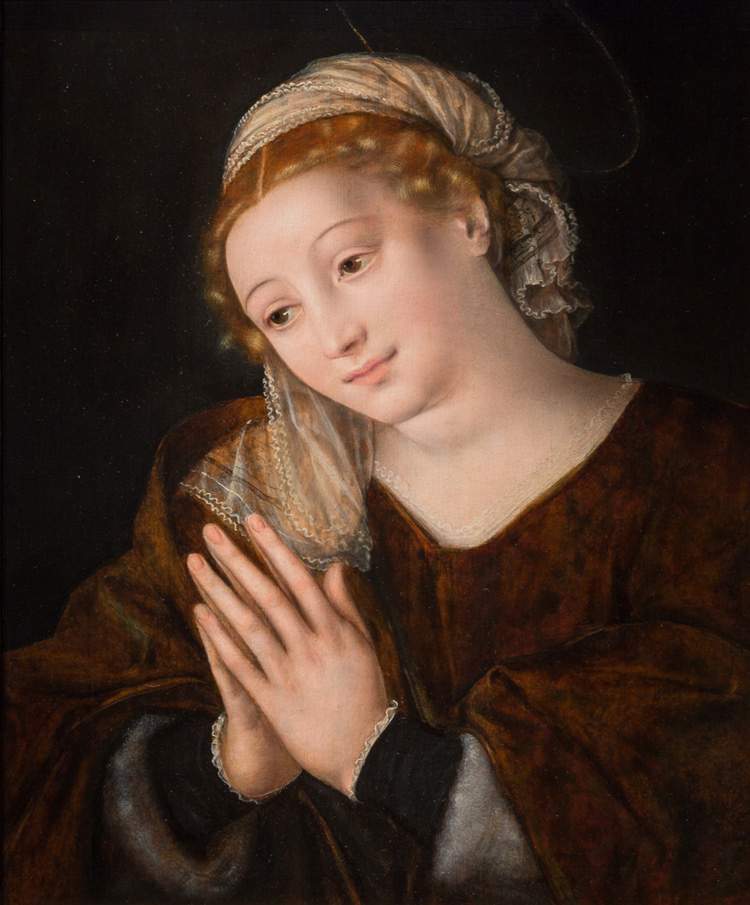The Caretto&Occhinegro Gallery in Turin, which has always specialized in Flemish art, opens its fall season with the exhibition From Massys to Porbous: the Flemish 500, from October 31 to December 20, 2018: it will be presented on the occasion of the gallery’s participation in the Flashback - All Art is Contemporary fair (booth 45) and will continue at the gallery’s headquarters. “Many of the paintings presented,” reads a note, “are the result of more than a year of research, collection and study, paying the utmost attention to attributive rediscovery (with cards edited by top international experts) and provenance, often from important Italian and foreign private collections. The nucleus of Flemish works from the 1500s, therefore, is a unique offering on the scenario of today’s old masters market.”
The exhibition, which will evokesixteenth-century Antwerp, a kind of Florence of northern Europe both economically and artistically, starts with what is considered its “spearhead,” namely the Virgin at Prayer by Jan Massys (Antwerp, 1509 - 1575). The work, which enjoys the unanimous approval of the academic community and will be published in the forthcoming monograph on Massys (edited by Maria Clelia Glassi) is a rare example of the levels touched by the first-rate masters of the 16th century. Jan Massys was a prolific author who also worked for a time in Genoa, where he left some of his earliest masterpieces. The panel, which now appears on the market after more than a century in a private collection, bears all the hallmarks of the Flemish painter’s poetics: in the slight hint of a smile, in the lyrical vivacity of the eyes, animated by a shifting and enigmatic spirit, in the tapered architecture of the hands and, above all, in the porcelain complexion that characterizes the entire figure, as if one were in the presence of a statue infused with spirit and polished in that formal perfection that distinguishes a Master from a mere craftsman.
From the cultural context of the Massys’ workshop also comes theEcce Homo by the Master of the Holy Blood: it is a work of powerful symbolism, capable of imposing itself on the viewer with the force of an almost metaphysical vision, a true achievement of that Flemish art of the origins, which like no other knew how to combine reality and symbol. Another exceptional find is the door depicting theAscension, by Adrian van Overbeke (Antwerp, news from 1508 to l529). The work, which came from an important Roman collection, is part of a monumental political dedicated to the Passion of Christ, most of the panels of which are currently kept at some of the world’s most important museums, such as the Bonnenfanten Museum in Maastricht. The discovery of one of the last missing doors is a fundamental discovery from an art-historical point of view and an important addition to the catalog of this Antwerp master who was distinguished by characteristic and extravagant forms, accentuated colorism and extreme, anti-classical spatial solutions: proof of this is the choice to show Christ as he is swallowed up by an authentic space-time rift that opens in the clouds and leaves room for the gold of the Metaphysical Infinity.
The exhibition not only displays religious subjects, but also gives ample space to early landscape (with works by Gillis Mostaer and Henri met de Bles) and portraiture. In the latter genre, the Portrait of a Man with a Letter by Nicolas Neufchatel (Antwerp?, 1527 - Nuremberg, c. 1590), also known as Nicolas Lucides, a painter deeply loved by Federico Zeri, who conducted one of the first and pioneering studies on the author, investigating his subtle relations with coeval Venetian painting and with the eclectic style of Cornelis of Lyon, stand out. It then continues with the Portrait of a Young Man by Frans Porbous I (Bruges, 1545 - Antwerp, 1581): the characteristics of the man in the portrait, with its delicately modeled epidermis, oval face, high cheekbones, rounded nose and lively eyes are narrated with marked acumen. The gaze is directed at the viewer and follows him carefully. The portrait as a whole is an astute psychological study of a man in his prime, presumably in his early thirties. This small portrait comes from a prestigious provenance: the collection of the Duke of Hamilton during the 19th century and, later, through some noble ownership, a patrician Roman collection. All the changes of ownership, since 1882, are documented through the labels affixed to the back of the painting.
The Madonna and Child with Saint Joseph by Adam van Noort (Antwerp, 1561 - 1641) ideally closes the exhibition. A master of Rubens and among the best representatives of so-called “Romanism,” that Flemish current that first opened up to the study of Italian figurative culture, combining classical influences with those inferred from Michelangelo and Raphael. The work, once owned by the famous collector Jacq Goudstikker, is a monumental essay in Italianism and marks the transition from Flemish art of the 16th century to that of the following century, making complete the narrative of stylistic evolution that Caretto&Occhinegro’s exhibition sets as one of its goals.
The exhibition is accompanied by a digital catalog, which can be requested directly by contacting the gallery. For more information you can call 338 87 123 26, send an e-mail to info@carettoeocchinegro.com, or visit www.carettoeocchinegro.com.
Pictured: Jan Massys, Virgin at Prayer (1552; oil on panel)
 |
| Turin, the Flemish 16th century is on display at Caretto and Occhinegro's |
Warning: the translation into English of the original Italian article was created using automatic tools. We undertake to review all articles, but we do not guarantee the total absence of inaccuracies in the translation due to the program. You can find the original by clicking on the ITA button. If you find any mistake,please contact us.